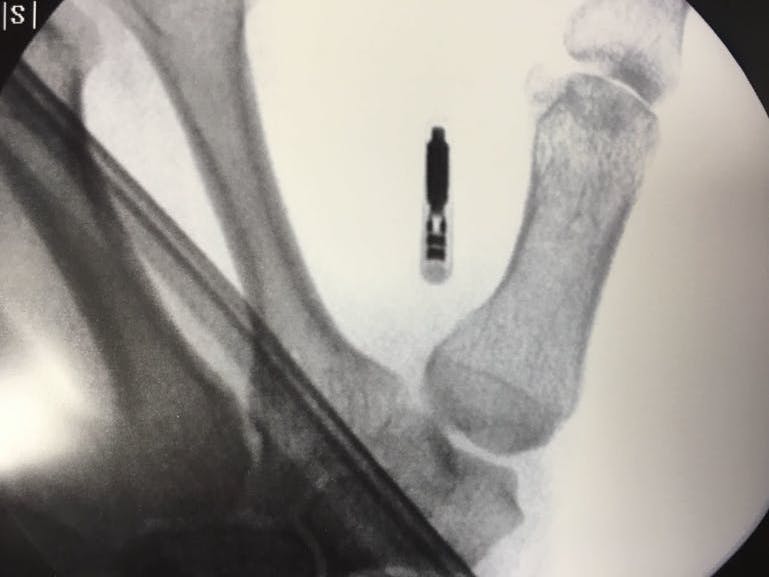Every year, we see thousands of medical cases shared on Figure 1. Here are some of our favorites from the past year.

1. Help from afar
In 2016, the Syrian refugee crisis reached new heights, and doctors in the area took to Figure 1 to help patients. Take the case of Dr. Rogy Masri, a doctor in a Syrian refugee camp in northern Lebanon. He asked a question about a skin lesion on Figure 1, and he was helped toward a diagnosis (the parasitic infection Leishmaniasis) by an internal medicine resident in Vancouver, Canada.

The Syrian refugee camp where Dr. Rogi Masri has used Figure 1 to help patients.
2. The patient who implanted a credit-card chip into his hand

This X-ray shows a chip implanted between the thumb and the index finger of a patient, an incidental finding discovered by a registered nurse.
The patient explained that he had implanted the chip himself, and that he has been “waving his hand” to pay for things. The RFID (radio-frequency identification) chip meant he could leave his wallet at home.
The registered nurse treating this patient revealed that he’s planning to insert more devices to do other things, like open his garage door. The nurse’s response? “I told him I do all of that from my phone, without the risk of infection, and with the ability to update as needed.”
An implanted chip helps this man pay for transactions by waving his hand.
3. A musical mind
A 37 yo male, who is a musician, presented with right temporal lobe epilepsy,” wrote this neurosurgery resident. “[The] preoperative workup showed the musical association cortex in the fMRI study was at risk during surgery, so an awake craniotomy for lobectomy was performed, during which the subject continually identified musical notes produced by an iPhone.”
And four years later, the patient does not experience seizures and continues to play music.

4. ‘Anyone able to draw me a picture of what his heart looks like now?

Upon seeing the request for help visualizing a child’s defective heart, the Figure 1 community alerted the pediatric cardiologist @m16surgeon, who quickly drew the above diagram. ‘Not one you can find on Google,’ she wrote.
Sometimes the best cases rely on the simplest techniques — like a pencil drawing.
“I need help developing a mental picture of this child’s heart,” a nurse practitioner wrote on Figure 1.
The 12-year-old patient had a variety of heart defects and repairs, and the nurse explained that she understood “the mechanics, but not the actual structure.”
After a few followup questions, a pediatric cardiologist created the illustration above. She then posed a few questions to the healthcare community.
“Does everyone understand the blood flow?” she asked. “For example, can anyone tell me some complications of this type of circulation and why it happens?”
As one registered nurse said: “To take what was described and come back with this drawing is absolutely incredible to me.”
5. “I asked one question and got the diagnosis”
A clever pediatrician shared this case on Figure 1 of a healthy nine-month-old girl with asymptomatic pigmentation on her shoulder. With only one question, he explained to the community, he was able to confirm the diagnosis. He asked for healthcare professionals to guess what it could be.

A number of suggestions were offered including, “Do you carry your child in a baby sling?”, “Any history of hiking?”, and “Which side of the car is the carseat on?”.
Eventually the pediatrician revealed his one question: “Have you been squeezing any fresh citrus lately?”
In this case, the patient’s mother had squeezed limes and picked the child up by her underarms. The rash was phytophotodermatitis, a reaction that occurs when skin comes in contact with plants containing furocoumarins (such as limes, celery, and wild parsnip).
How did the pediatrician know? From experience. He said, “First time I saw it years ago it stumped me.”
Published January 2017
Join the Conversation
Register for Figure 1 and be part of a global community of healthcare professionals gaining medical knowledge, securely sharing real patient cases, and improving outcomes.


